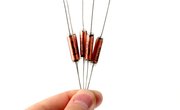
Electrical substations are supplementary parts of electricity generation systems, where voltage is transformed from high to low and vice verse using transformers. Substations containing step-up transformers increase voltage and decrease current. If the transformer contained within the substation is a step-down, the voltage decreases, and the current increases. There are three main types of substation: transmission, distribution, and collector.
Transmission
A transmission substation connects transmission lines, generally when all the lines concerned have the same level of voltage. The transmission substation contains high-voltage switches which allow the lines to be connected or, if necessary, isolated. The transmission substation also incorporates capacitors or reactors to deal with voltage control. A transmission substation can vary in size, with the smallest types containing circuit breakers and an electrical bus, while a larger transmission substation includes multiple voltage levels.
Distribution
The aim of a distribution substation is to transfer the power from a transmission system into a distribution system. A distribution substation is commonly made up of two transmission lines that provide the input, and a set of feeders that act as an output. The voltage runs through the substation, and out of the feeders. It then travels to a distribution transformer and generates electricity. A distribution substation is responsible for voltage regulation, and also for isolating any faults within the transmission and distribution transformers. A typical distribution substation contains a switch and a transformer with low voltage. Larger, more complex substations are generally found in cities. These contain back-up low voltage systems, as well as high-voltage switching.
Collector
A collector substation works with projects that collect energy from many small energy sources. While the collector substation shares a resemblance to the distributor substation, its power flow works in the opposite direction, collecting energy and feeding a transmission grid. The collector substation is also able to collect thermal and hydroelectric power, so positioning one next to a power plant is an efficient way to generate power.
References
About the Author
Marc Wright has been writing professionally since 2004. He has been published in the literary magazine "Things," as well as the student newspaper "The Demon" as a music critic. In 2009 Wright graduated from De Montfort University of Leicester with a Bachelor of Arts in creative writing and English.
Photo Credits
Details of and electricity power plant image by JCVStock from Fotolia.com
